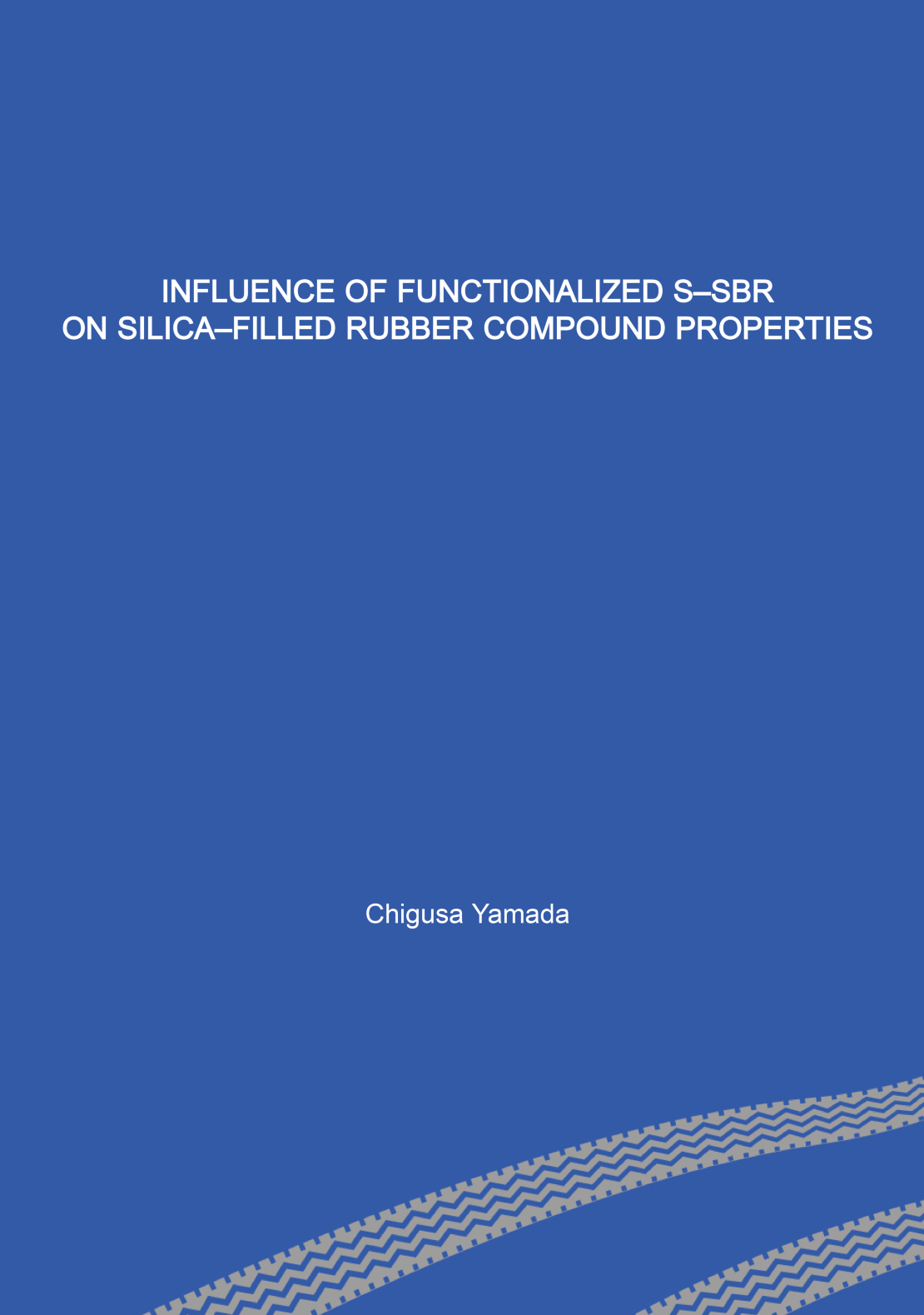On Thursday, May 4th 2023, Ms. Chigusa Yamada successfully defended her PhD thesis entitled: “Influence of functionalized S–SBR on silica–filled rubber compound properties".
Short Summary
"Since CO2 emissions are identified as the main driver for the global climate change, the regulation on reducing the CO2 emission from the vehicles started in Europe. Hence, there has been a strong demand for improving fuel efficiency of the vehicles in the market. The rolling resistance of the tire is one of the major factors which impacts on the fuel efficiency of the vehicles. Therefore, a low rolling resistance is an important requirement for the tread part of tires. At the same time, a sufficient wet grip is necessary from a safety point of view as well as maintaining a good abrasion resistance. These three requirements are known to be in a trade-off relationship. In order to achieve a significant improvement already in the past, a rubber compound based on S-SBR/BR filled with a silica/silane system was invented by Michelin in 1992, replacing the former E-SBR compound filled with carbon black. Many studies have been done to improve the performance of silica-filled compounds further; a silica with higher surface area was used to improve the abrasion resistance in comparison with the normally used silica with a CTAB surface area of 160 m²/g. Additionally, the mixing conditions were optimized to obtain an improved dispersion quality of silica for reduced rolling resistance. In the 2000s, functionalized SBR was developed which is nowadays the type of elastomer commonly used for the tread compound. Some studies have been done to understand the impact of the functional groups in SBR on the performance of the compound, however, it is not clarified yet if a direct reaction between the functional groups and silica takes place in the silica-filled compound with functionalized SBR. Therefore, the main objectives of this study were: 1) to understand the influence of two functional groups (amine group and alkoxy silyl group) in SBR on the performance of silica-filled compounds. 2) to investigate which type of interaction or reaction takes place in the compound with functionalized SBR. 3) to evaluate the effect of silica-filled functionalized SBR compound in the presence of Si363, a mercapto silane, and identify the likeliest reactions." |
|

